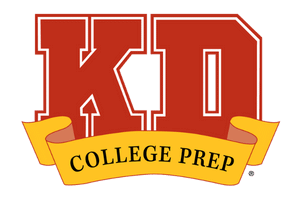A college visit is like a first date. You’re each so focused on putting your best foot forward that you might not notice some of the details that make the college “real.”
While your tour group is being led along a specifically designated path, you should keep an eye out for signs of what the campus is like when it’s not trying to woo you.
You can and should ask the tour guide questions too!
Looking around is exactly what you’re there to do. See if you can spot these five hidden things that many prospective students will overlook.
1. Where are the students?
It’s no secret that some students hide during highly-publicized campus visit days. On most days though, there are plenty of real-life college students going about their daily lives without even realizing you are there.
Notice where the students are. If every single one is hunkered down in dorm rooms, that says something. If the library is super crowded that says something else. If the lawn is packed with frisbee-players that tells you about the campus culture.
There isn’t a right or wrong grouping of students, just one that you think matches your college plans. Paying attention to how students are distributed across campus can give you an indication of the atmosphere on campus.
You may also interact with students during the course of the tour. Ask them what they would be doing if they weren’t helping with recruitment.
2. What’s on the bulletin boards?
Snap a photo of bulletin boards that you walk past and evaluate them later. This will help you find out what types of extracurricular opportunities are present on campus.
You might get an indication of the political, social, or religious pulse of the campus that isn’t immediately apparent. If the notices are all about volunteerism and campus performances—or if they’re all about study help and academic clubs—you’ll learn something about how students want to spend their time.
Bulletin boards provide excellent clues about the cultures and opportunities nearby, whether those are on a dorm level, a building level, or a campus level.
Think about the relevance of the notices to you personally. Do you see something that excites you? Is there an event you could see yourself attending? (If it’s happening while you’re on campus, why not show up?)
3. How are people interacting?
Some interactions on your tour will be staged. You might be introduced to a professor or the leader of a prominent student club. You could be shown the cafeteria on pancake day, when it’s most crowded. You might meet the Resident Assistant (RA) of a freshman dorm.
But be sure to look around at people and places who aren’t on the tour. Notice whether people in the cafeteria are eating mostly alone or whether they’re in groups of mixed cultures. Observe common study areas to see whether students are participating in study groups or reading with their headphones in.
Pay special attention to how students and professors act together if you get a chance. Are professors sitting with students in the cafeteria or in other areas? Professors who are approachable and greet students by name, who crack jokes and get students to talk in class, and who don’t immediately bolt after the lecture is over are a good indication of commitment to learning.
Class size can affect professor-student interactions to a large degree, but teachers who care always make themselves known.
4. How are the classrooms set up?
They might be mainly large lecture halls.
They might be conference-style rooms.
They might be smaller classrooms (or classrooms that are too small).
They might have outdated lab equipment or state-of-the-art technology.
They might have projectors or chalkboards.
Notice the arrangement of the classrooms to pick up hints about what academic life is like on campus. Sometimes you can even find out which departments are favored by how new the classroom fixtures are.
5. What do the “other” dorms look like?
They show you the nicest ones on the tour. Of course they do.
Ask around and find out what the others are like. You might even get a peek inside.
Analyze a campus map to see what time you’d have to be out the door to get to your 9:00 a.m. class. How often do the buses run? Where can you park your bike?
If you can’t manage to find out about the “other” dorms or apartments while on the tour, take a walk around campus on your own to catch a glimpse of where most of the sophomore music majors live or the suites you can apply for once you have enough credit hours.
Think about Greek living too. If you’re planning to pledge, find out whether your future residence is well-maintained or, frankly, looks like students live there.
Taking care to observe these hidden clues during your campus tour can help you identify whether this campus isn’t what you expected or if it is exactly what you were hoping for. You will at least feel confident that you got insight into the college’s real character.

